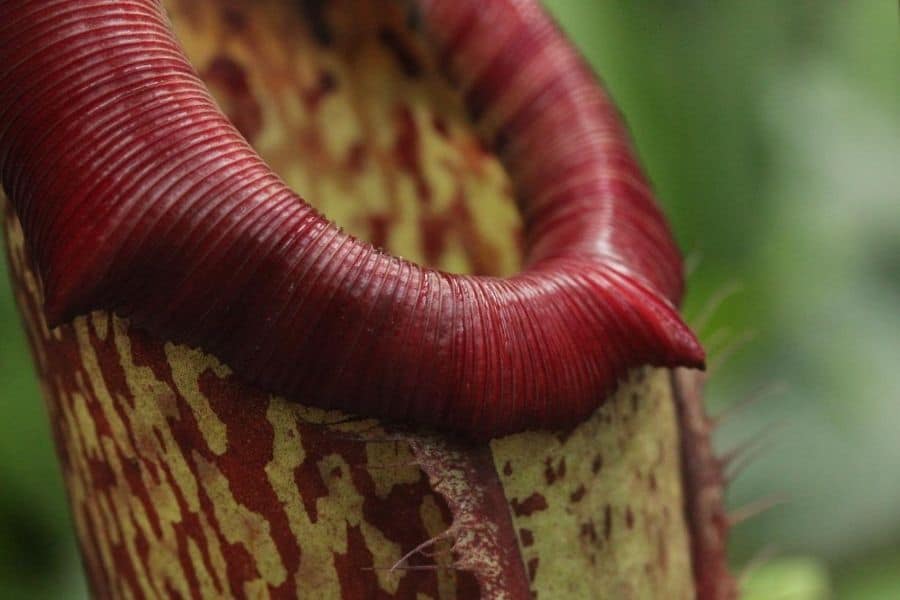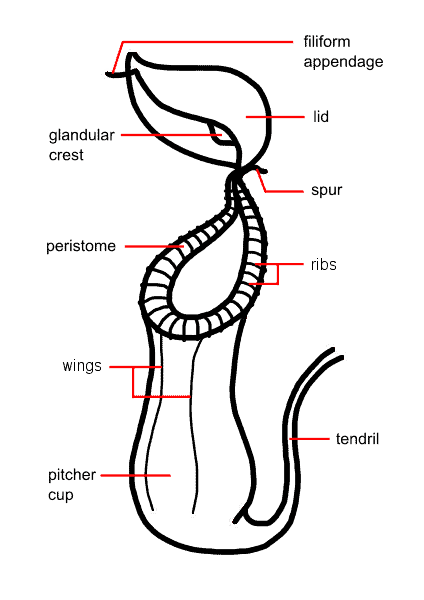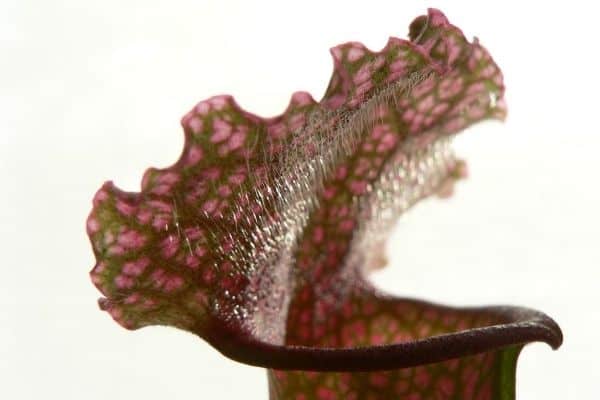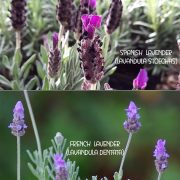
Photo by: Björn S
There are thousands of interesting and mysterious plants in the world, the pitcher plant (nepenthes) being one of these plants because it traps and digests insects and other small animals. But how exactly does the pitcher plant trap insects?
First, the pitcher plant lures the insects to its trap by secreting sweet nectar on specific places of the trap. Once the prey steps on the slippery peristome (upper rim) of the trap to eat the nectar, the prey will fall into the trap. After which the prey will drown and be digested in the pitcher's fluid.
After reading this article, you will know everything about how pitcher plants trap insects.
Contents
How Does The Pitcher Plant Trap?
There are 5 different types of pitcher plants: Nepenthes, Sarracenia, Darlingtonia California, Heliamphora, and Cephalotus.
All these pitcher plants have somewhat similar trapping mechanisms that are made out of modified leaves that assist it to trap the insects. The specialty of this trap is that it has a prey trapping mechanism with a deep cavity that is filled with digestive liquid and in some cases downward-pointing hairs in the trap.
To lure insects to the trap, the pitcher plant secretes sweet nectar on the peristome and the lid. When the prey starts eating the nectar of the plant, there is a big chance that the animal (small insect) will fall into the trap because peristome (see picture below) is slippery. If the insect or small animal falls into the digestive liquid, it will drown and eventually be digested.
So, in order for a Pitcher Plant to trap insects, all the trapping mechanisms of these pitchers work with the same three principles:
- Phase 1: Lure.
- Phase 2: Trap.
- Phase 3: Digest.

The carnivorous pitcher plants originally belong to two large families which are the Nepenthaceae and Sarraceniaceae (and a small family called the Cephalotus). All of these plants trapping mechanisms work in somewhat similar ways.
The Nepenthes pitcher plant belonging to the category that can vine high up in the trees as well since there are not many sources of food on the top that is why the plant had to find an alternative source for its nutrients. This is why the Nepenthes pitcher plants have evolved to grow pitcher traps and trap their own prey.
The Sarracenia (including Darlingtonia californica and Heliamphora) pitcher plants, on the other hand, works with the same trapping mechanism as the Nepenthes pitcher plants. It only has a different shape trap. This plant gets the attention of a wide range of insects and in contrast to the nepenthes pitcher plant, the Sarracenia pitcher plants grow on the ground (and do not vine up in trees). They grow in boggy environments where the ground is always wet and has little nutrients.
The Cephalotus grows along the grassy edges of the coastal heathlands in southwestern Australia. This plant grows low to the ground and has the same trapping mechanism as the Nepenthes.
Phase 1: How Pitcher Plants Lure Their Prey?

All of the pitcher plants atract animals to their traps by secreting sweet nectar to
use some kind of sweet nectar to attract their prey such as nectar and many other things but there are still such types of pitcher plants that attract their prey with their attractively colored, elongated pitchers with nectar. Some of the species are even able to produce scents to attract their prey. Once the prey that enters the pitcher plant can never escape as the structure is too slippery inside to climb and reach out. Once the prey is trapped in it, it will eventually drown in the liquid inside the pitcher.
Thus, this was the whole mechanism that at first, a pitcher plant attracts the prey to itself through its attractive nature and the luring nectar and then how it traps the insect to its pitfall, and then finally the insect is drowned in the liquid and the digestion starts afterward through different mechanisms.
Phase 2: How Pitcher Plants Trap Their Prey

Photo by: Pirbo
The cavity of the pitcher plant formed by the cupped leaf attracts the foraging, flying as well as crawling insects such as flies.
The main reason why the insects fall in the trap of a pitcher plant is the rim of the pitcher plant also known as peristome which becomes slippery when moistened by condensation or nectar.
The Nepenthes and Cephalotus trap their prey with the help of waxy insides that cause the insect to slip down in the trap when it tries to crawl out of the trap. These plants also have an overhanging upper rim (peristome) which makes it really hard for the prey to crawl out.
The Darlingtonia californica makes use of transparent leaves in order to trap the insect inside its trap. The insect will be confused when it enters the trap and eventually fall deeper into the trap leaf. Besides this feature, the Darlingtonia also has downward-pointing hairs to trap the insect deeper and deeper in the trap.
The Sarracenia and Heliamphora both have downward-pointing hairs inside their traps to trap their prey. Due to these hairs, the prey forced into the pitchers' lower parts, into the digestive fluids.
Once the prey falls or crawls into the trap of the pitcher, the prey will eventually fall into the digestive fluid inside the trap. Followed by phase 3, the digestion phase.
Phase 3: How Pitcher Plants Digest Their Prey

So after the prey falls into the digestive fluid inside the pitcher, the last phase of the traps' mechanism begins, the digestion phase.
The digestive juice (see picture) present in a pitcher plant is not regular water. It actually contains some special kind of chemicals which have also been found in our stomach that can easily but slowly munch and digest the skin of the insects until it gets completely dissolved and finally looks like juice (takes from 2 weeks to 2 months to digest). The only thing that remains after the digesting process is the exoskeleton of the insect.
This kind of digestion process is just ordinary in the day to day life of a pitcher plant. Even if it is bigger in size then it can easily swallow up small frogs, and other small mammals. It's a very deadly trap for mosquitoes and other small crawling insects. But it is not harmful to human beings and neither can it swallow up a whole human body.

The liquids present inside the pitcher plant are responsible for drowning the insect whose body is gradually dissolved. The dissolving action might also be the result of bacterial action or also could be by enzymes secreted by the plant itself. Some of the species of the pitcher plant contain mutualistic insect larvae, which generally feeds on trapped prey, whose excreta is absorbed by the plant afterward.
After the whole process is done finally, the prey is converted into the solution of amino acid, peptides, phosphate, ammonium, and plants get all the nutrition from here.
pictures above by: WikiCommons & GEE



Leave a Reply